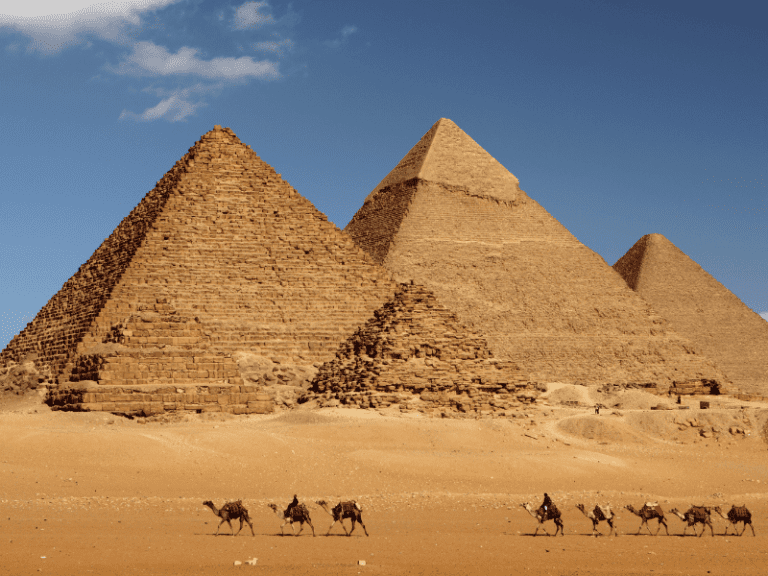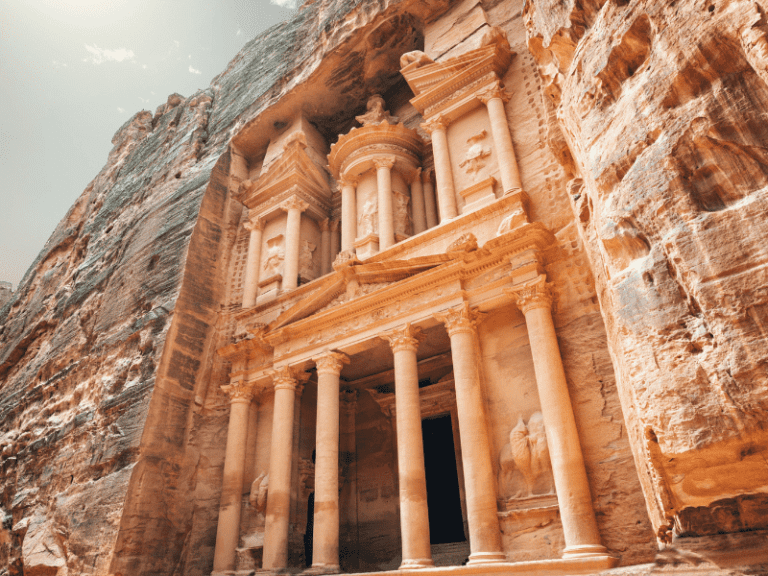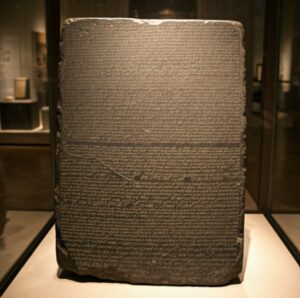The Rosetta Stone is one of the most significant archaeological discoveries in history. Its discovery unlocked the secrets of Ancient Egyptian hieroglyphs, allowing historians to decipher one of the oldest written languages in the world. The stone’s story is not only about the text it contains but also about the people and events that led to its discovery and its subsequent impact on understanding ancient Egypt. For travelers visiting Egypt, the story of the Rosetta Stone adds an exciting chapter to the adventure of uncovering the mysteries of this fascinating civilization.
What Is the Rosetta Stone?
The Rosetta Stone is a black granite slab that measures about 45 inches tall and 30 inches wide. It was carved in 196 BC during the reign of King Ptolemy V. The stone is famous because it contains the same text written in three scripts: Greek, Demotic, and hieroglyphic. This made it possible to compare the known Greek text with the ancient Egyptian scripts and ultimately decode the hieroglyphs.
- Greek: The Greek inscription was well known, as Greek was the language of the ruling Ptolemaic dynasty at the time.
- Demotic: This script was a more simplified form of writing used in everyday Egyptian life.
- Hieroglyphic: The ancient Egyptian hieroglyphs were the key to understanding the civilization’s language and culture but had remained a mystery for centuries.
The Rosetta Stone’s trilingual inscription made it possible for scholars to finally unlock the meaning of hieroglyphic writing, which had been a puzzle for more than 1,000 years.
Discovery of the Rosetta Stone
The discovery of the Rosetta Stone is a tale of exploration, war, and serendipity. In 1799, during Napoleon’s campaign in Egypt, French soldiers were conducting renovations to a fort near the town of Rashid (also known as Rosetta). One of these soldiers stumbled upon the stone while digging for foundations. The stone was then sent to Cairo, where it was quickly recognized as a significant find.
- French Soldiers: The stone was found by Pierre-François Bouchard, a French engineer, who initially had no idea of its importance.
- Napoleon’s Campaign: At the time, Egypt was under French control, and many scholars were accompanying Napoleon’s military forces to study the ancient land.
- British Capture: After the British defeated the French in 1801, they took control of the stone, and it was transported to England, where it would play a crucial role in deciphering Egyptian hieroglyphs.
This chance discovery set the stage for one of the most important intellectual breakthroughs of the 19th century.
Decoding the Hieroglyphs: The Work of Champollion
Although the Rosetta Stone was discovered in 1799, it wasn’t until 1822 that the first breakthrough in translating the hieroglyphs was made, thanks to the work of French scholar Jean-François Champollion. Champollion was fascinated by the ancient Egyptian language, and after years of dedicated study, he finally cracked the code.
- The Key to the Code: Champollion realized that the Egyptian hieroglyphs were not just symbolic representations of ideas, but also phonetic symbols representing sounds. This insight was crucial in translating the hieroglyphic text.
- His Achievement: In 1822, Champollion publicly announced his discovery, and his work became the foundation for further studies in Egyptology.
- Further Developments: Champollion’s work was expanded upon by later scholars, but his breakthrough with the Rosetta Stone remains one of the most significant intellectual achievements in the study of Ancient Egypt.
Without the Rosetta Stone, the understanding of Egyptian hieroglyphs would have remained a mystery, and the depth of Egypt’s written history would have been lost.
The Significance of the Rosetta Stone
The Rosetta Stone’s importance extends far beyond its role in deciphering hieroglyphs. It provided scholars with the key to understanding Ancient Egypt’s culture, religion, and history, unlocking texts that had been unreadable for millennia.
- Cultural Insight: The stone provided insights into Egypt’s Ptolemaic dynasty, showing how rulers used language and propaganda to maintain power and legitimacy.
- Historical Value: The Rosetta Stone also revealed details about the political and religious landscape of Egypt during the Hellenistic period, including the role of the priesthood and the pharaoh.
- Impact on Egyptology: The stone is regarded as the foundation of the field of Egyptology, as it opened up the study of ancient Egyptian civilization in a way that was previously impossible.
Today, the Rosetta Stone stands as a symbol of scholarly perseverance and the profound impact that understanding ancient languages can have on unraveling the mysteries of the past.
The Rosetta Stone in the British Museum
After being captured by the British in 1801, the Rosetta Stone was transported to London, where it became a prized object in the British Museum’s collection. The stone remains there today, on display for visitors from around the world to see.
- Public Display: The Rosetta Stone has become one of the most visited objects in the British Museum, attracting scholars, historians, and tourists alike.
- Controversy: Some debates persist about the ownership of the stone, as Egypt has long called for its return. However, the stone remains in London, where it continues to be an important educational tool for learning about ancient Egypt.
- Global Significance: The stone’s display in the British Museum symbolizes the global fascination with ancient Egyptian culture and the enduring legacy of the civilization’s intellectual achievements.
For visitors to the British Museum, seeing the Rosetta Stone in person is a powerful experience, connecting them to the moment in history when ancient Egypt’s language was first understood by modern scholars.
The Rosetta Stone’s Legacy
The legacy of the Rosetta Stone is immense, not just for Egyptology but for the study of ancient languages and cultures in general. It was the first step in uncovering the hidden history of one of the world’s oldest and most influential civilizations, and its influence can still be felt today.
- Inspiration for Scholars: The Rosetta Stone continues to inspire researchers and linguists, pushing the boundaries of knowledge about ancient civilizations.
- Cultural Preservation: By enabling the reading of ancient Egyptian texts, the Rosetta Stone helped preserve the cultural heritage of Egypt for future generations.
- Tourism and Education: The story of the Rosetta Stone adds another layer to the rich tapestry of Egypt’s history, enhancing the experience for modern travelers who visit Egypt to explore its ancient monuments and tombs.
Conclusion: Unlocking Egypt’s Mysteries for Modern Travelers
The Rosetta Stone’s discovery and subsequent translation opened the door to a deeper understanding of Ancient Egypt. For modern-day travelers, the story of the stone provides context for many of the treasures and monuments they may encounter while exploring Egypt. Travel Joy Egypt offers expertly guided tours that bring visitors face to face with the wonders of ancient Egypt, from the pyramids to the temples, helping to uncover the rich history behind these incredible monuments. The Rosetta Stone is a perfect example of how history, language, and culture are intertwined, allowing us to connect with the past in meaningful ways.









